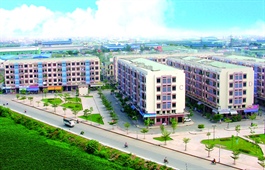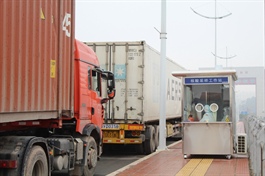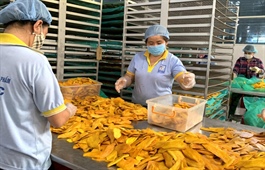Regional pandemic policy threatening to dampen supply chain improvements
Regional pandemic policy threatening to dampen supply chain improvements
Vietnam’s supply chain still faces headwinds in the third year of the coronavirus pandemic, but positive signs still abound.

Stephen Olson, research fellow at the Hinrich Foundation, told VIR, “Vietnam faces the likelihood of ongoing supply chain disruptions at least for the first half of 2022, especially with China. It appears that China has decided to prioritise pandemic mitigation over trade facilitation in advance of the Beijing Olympics and the 20th Party Congress later in the year.”
While some joint efforts can be taken by Vietnam and China to ameliorate the recent backlogs at the border, China seems willing to accept short-term trade disruptions in order to ensure the smooth running of these two major events.
“Vietnam’s living with COVID-19 strategy will have limited impact if its key trade partners maintain a zero-COVID strategy,” Olson added.
He noted that the Omicron variant’s impact on global supply chains will largely be a function of the length and severity of the lockdowns and border closures that key trading countries put into place. Vietnamese companies should be prepared for the possibility of trade disruptions at least for the first half of the year and perhaps longer.
Tran Viet Huy, managing director of Tracimexco - Supply Chains and Agency Services JSC pointed out another challenge for Vietnam’s logistics and supply chain industry in 2022. His company has to pay for higher input costs for fuel, warehouse rent, maintenance, and more. In particular, the company has to spend part of its budget on pandemic prevention expenses while labour costs stay the same. Therefore, it is making efforts to boost digitalisation and restructure its organisation.
Huy added, “Vietnamese logistics companies, most of which are small and medium-sized enterprises, are dealing with many obstacles from the pandemic. They really need the relief measures from the government and banks to boost recovery. However, we are quite optimistic about the prospect of the logistics and supply chain industry in 2022. Given the emergence of new variants, we hope that the high vaccination coverage will help reduce the impact of lockdowns and alleviate supply chain strain.”
Despite the challenges, Vietnam’s supply chain is showing strong resiliency on the back of the recovery of manufacturing and export activities. The latest report by HSBC showed that supply chain disruption issues in Vietnam attracted the attention of the international community in 2021. In the third quarter of 2021, Vietnam recorded the largest manufacturing contraction for a decade. However, the manufacturing activities have started to rebound similar to early last year. Manufacturing activities grew by 8 per cent on-year in the fourth quarter and 6.4 per cent on-year for the whole year.
Meanwhile, Vietnam’s exports have quickly recovered and increased by 19 per cent on-year in the fourth quarter after a strict social distancing period in Q3. Both textile and footwear exports have rebounded similar to before the Delta outbreak. In 2021, Vietnam’s exports have been up 19 per cent mainly due to electronic and equipment exports. The increase reflects the rising global demand and stable supply chain in the northern region, which is home to some of the largest tech companies.
As the country pursues its coronavirus strategy, Vietnam’s supply chain disruption shows signs of easing with delays becoming less pronounced. Andrew Harker, economics director at IHS Markit, added, “The Vietnamese manufacturing sector ended 2021 in a steady growth phase. Client demand continued to improve in December, but the ongoing circulation of the pandemic is likely to restrict the pace of the recovery.”
One positive from the latest PMI survey, according to Harker, was that businesses were finally able to start rebuilding workforces, albeit marginally, overcoming some of the difficulties by attracting staff back to work. “While firms were generally confident about the outlook for output in 2022, the new Omicron variant adds a further layer of uncertainty for the months ahead,” he said.





















